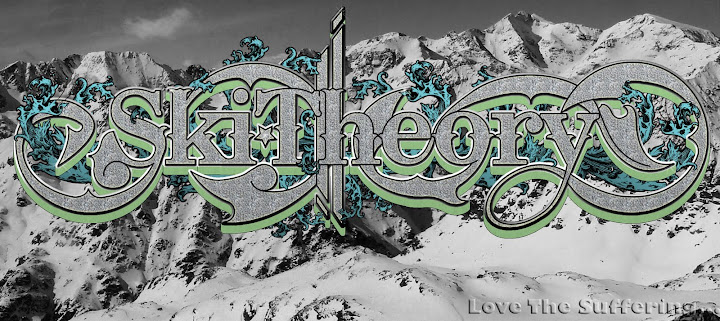As skimo athletes, we are not track and field sprinters, running on flat groomed terrain with zero external weight to carry. Travelling primarily uphill, through rolling and/or steep terrain, our focus combines vertical take off with forward momentum (much like running, but with an external load to bear, and while travelling uphill). The external weight we carry limits our bodies natural tendon recoiling ability to reposition our legs as easily as a runner (ie cadence), as the equipment forces more muscular energy to move it, and recoiling energy is dispated by the weight of our equipment. This drastically reduces our cadence, and this must be addressed, and if not we risk watching our peers disappear into the distance leaving us behind. Therefore, in order for cadence to be as truly efficient and as fast as possible, we must train our bodies to move the equipment through a greater range of motion (ie, behind and below, to in front and above on the skintrack), and as fast as possible. (Photo Left: James Minifie and Stano Faban pre-running the Individual course, Andorra)
While you are skinning, and pushing off a stride, you are pushing up and forward. This is the exact moment where vertical take off occurs. During this point, the torso lines up with the leg delivering the power, pitching slightly forward, so that when the upward and forward momentum is delivered the racer gains half a second of rest while travelling a short distance with minimal weight on the skeletal system (gliding). As soon as this split second of travel forward is up, the opposing leg moves forward, and moves into its glide phase which delivers more forward momentum. (This movement can be seen below in a movie the Spanish Team has created to analyze their efficiency and technique).
Without going into an obscene amount of detail on the movement and stride dynamics we're using, there are a few things to focus on during training to get the most out of our stride. And that comes from our strength training. First thing is first, our stride starts with pushing up and forwards. Training using squats, weighted calf lifts, deadlifts, and lifting heavy improves our strength, which in turn allows us to deliver greater ground force while skinning. It was found that elite sprinters all had approximately the same cadence, as it was nearly maxed out due to their tendon recoil only being able to move so quickly, and that their speed came from a stronger stride (greater ground force), which caused them to have more aerial forward distance gained between strides. The same applies for skimo racing, except we don't utilize aerial forward gain, we gain a longer stride through our glide. This greater ground force not only propels us vertically, but increases our glide length, which translates as a longer stride or greater distance gained per step.
The forward momentum and upwards momentum is a quick twitch of our muscles, and off we go. So box jumps, skipping, burpees, and any explosive movements should be trained as well. All this when combined with racing, intervals, and even your long slow distance or base workouts, will translate to large gains in speed. But if you're still thinking sport specific, think again, everything is connected. Train everything, your legs are connected to your core, as are your arms (which makes them connected to your legs). This means that by you having a weaker "blank", you will be slowing down something else.
Strength is important, but don't get carried away with becoming a beefcake. As a skimo racer, is to have the best mass-specific force as possible. For example, if a racer were to weight 200lbs and can put down 300lbs of power behind them, but the 160lbs racer who can put down the same amount of power as the 200lbs person will obviously be much faster and win in a race. So this lifting should be heavy, building strength, not bulk. To learn more about this check out this article on Gym Jones, and here, these guys know strength training! Hopefully, this opens some new doors, or ideas on training for this sport where information is so limited. But through constant study, testing, and time, a higher speed will be found.








I thought I'd chime in here. Al I think there's a bit of a hole in your speed equation.
ReplyDeletespeed=(stride length+ vertical power+ #shots of espresso drank)*cadence/ time
just a rule of thumb I use....
I hate to race without it, and think that there is a noticeable difference with it. At least thats what I keep telling myself.
ReplyDeleteher poles are too long
ReplyDelete